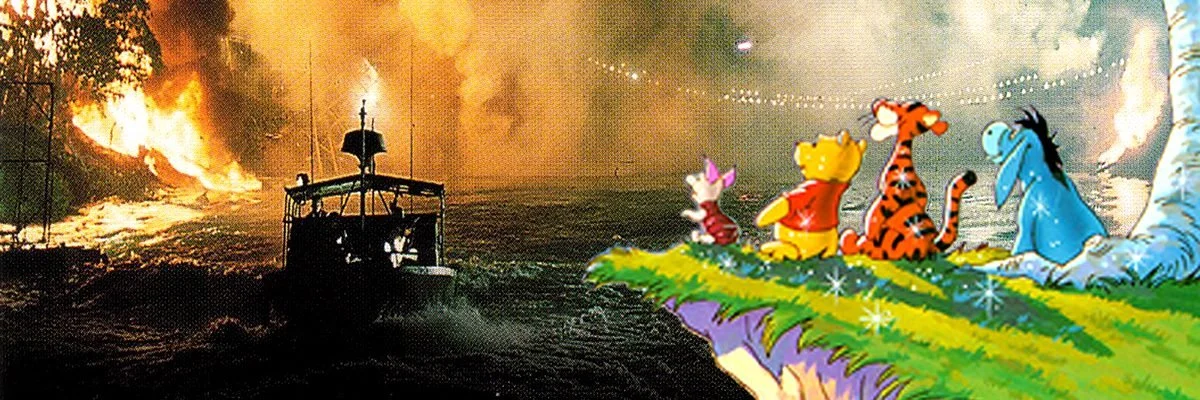Co-Presented by MAK Center and Los Angeles Filmforum
In the spirit of Oswald de Andrade’s landmark 1928 provocation, the Manifesto Antropófagio, this program features a works of artists, dating from the 1950s up to today, that engage in found footage filmmaking, a subaltern practice of decolonization and critique through the collage of appropriated images and audio. This practice, sometimes called “recycled cinema,” “détournement,” or “cinema of appropriation,” has particular resonance in the region, where outsiders’ misrepresentations often dominate the local cinematic productions on screens. Nuyoriquen artists Raphael Ortiz Montañez took a 16mm print of Winchester ’73 (Anthony Mann, 1950), a Hollywood Western in which Rock Hudson plays a Native American, and hacked the reels to pieces with a tomahawk “to release their evil.” Placing the film fragments in a medicine bag, he performed a ritual exorcism inspired by his Yaqui grandfather before splicing together the random fragments, some upside down and others right side up, that comprise the Cowboy and ‘Indian’ Film (1958). A Cuban newsreel from 1960 shows the triumphant supporters of the Revolution taking over the former offices of major Hollywood studios, and repurposes the reels found within. The progeny of these forerunners are diverse in their strategies and aims, ranging from Cecilia Barriga’s The Meeting of Two Queens (1991), a queer romance between Greta Garbo and Marlene Dietrich, to Artemio’s mash-up of Walt Disney’s adaptations of Winnie the Pooh and Francis Ford Coppola’s Apocalypse Now (1979). Eduardo Menz’s Las mujeres de Pinochet (2005) juxtaposes the testimony of Carmen Gloria Quintana, an activist badly burned by the Chilean soldiers while protesting against the brutality of Augusto Pinochet’s regime, with footage of the dictator congratulating Cecilia Bolocco, the nation’s first successive Miss Universe contestant. Through reframing and repetition, the contradictions of these two women’s experiences and of the totalitarian state’s parameters for acceptable female behavior slowly and painfully emerge.
This screening is held in conjunction with the exhibition How to Read El Pato Pascual: Disney’s Latin America and Latin America’s Disney.
Screening
No D.R.
Alfredo Salomón, 2002, 1 min., color, sound, digital, México.
California premiere.
Newsreel 49
Institúto Cubano de Artes e Industrias Cinematográficas, 1960, 1 min., b&w, 35mm transferred to digital, Cuba.
Los Angeles premiere.
‘Cowboy’ and ‘Indian’ Film
Rafael Montañez Ortiz, 1958, 2 min., b&w, sound, 35mm reduced to 16mm and transferred to digital, USA.
Desde la Havana ¡1969! Recordar
Nicolás Guillén Landrián, 1969, 17 min., b&w, sound, 35mm transferred to digital, Cuba.
The Big Wack
Ricardo Nicolayevsky, 2002, 2 1/2 min., b&w, sound, digital, México.
Los Angeles premiere.
Oración por Marilyn Monroe
Marisol Trujillo, Miriam Talavera, and Pepín Rodriguez, poem by Ernesto Cardenal, 1983, 8 min., b&w, sound, 35mm transferred as digital, Cuba.
Apoohcalypse Now
Artemio, 2002, 8 min., color, sound, digital, México
Las mujeres de Pinochet
Eduardo Menz, 2004, 12 min., color, sound, digital, Canada/Chile.
California premiere.
Las ruinas de Bahía Blanca
Nicolas Testoni, 2012, 5:20, color and b&w, sound, digital, Argentina.
California premiere.
Pobre del cantor
Taller Independiente de Cine Experimental, 1978, 2 min., color, sound, super-8 transferred to digital, México.
California premiere.
Chapucerías
Enrique Colina, 1987, 11 min., color, sound, 35mm transferred to digital, Cuba.
Related
Exhibition
How to Read El Pato Pascual: Disney’s Latin America and Latin America’s Disney
September 9, 2017 – January 14, 2018
Related
Events
Thursday, Oct 1, 2017
7:30-9pm
Thursday, Nov 29, 2017
7:30-9pm

